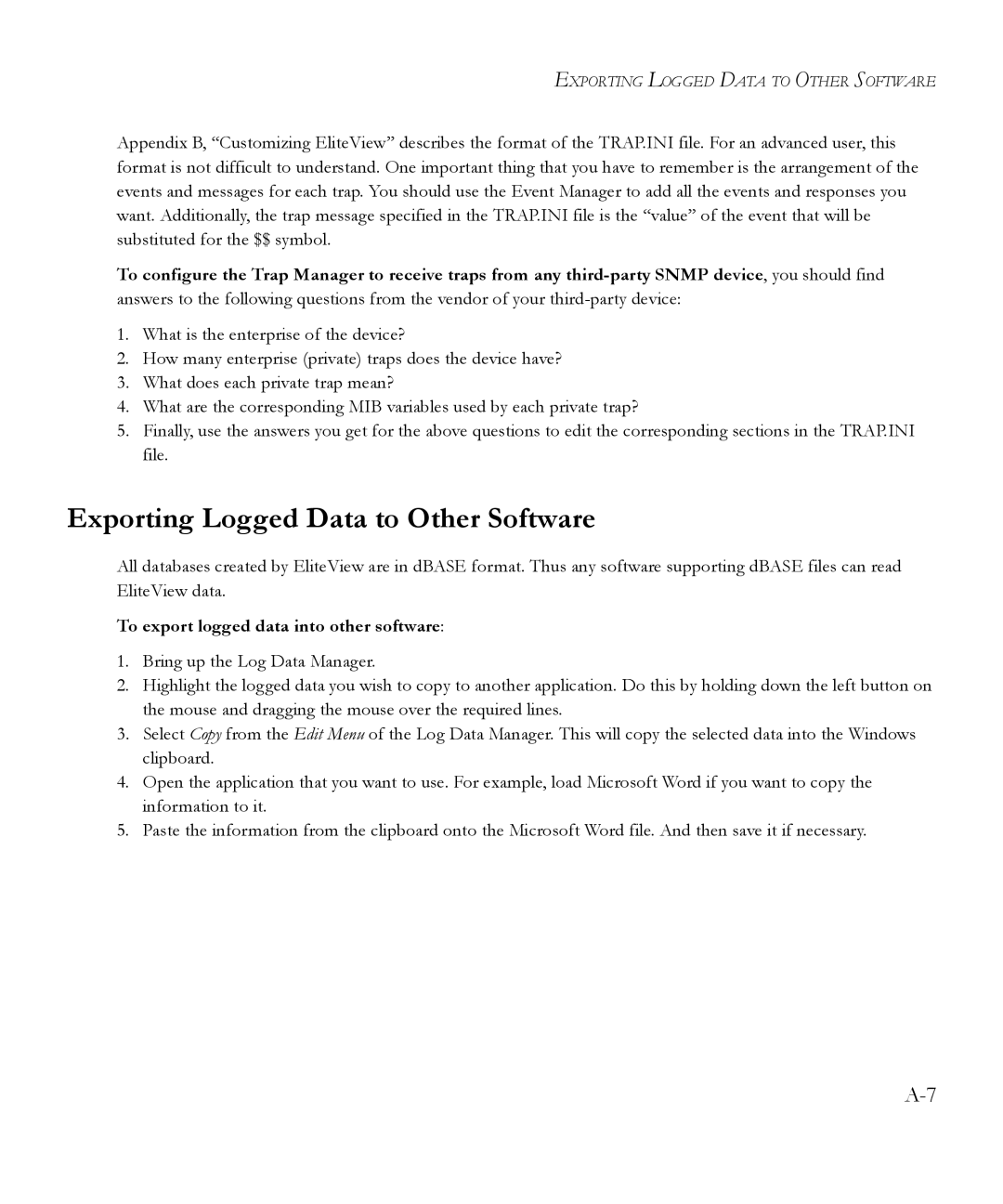EXPORTING LOGGED DATA TO OTHER SOFTWARE
Appendix B, “Customizing EliteView” describes the format of the TRAP.INI file. For an advanced user, this format is not difficult to understand. One important thing that you have to remember is the arrangement of the events and messages for each trap. You should use the Event Manager to add all the events and responses you want. Additionally, the trap message specified in the TRAP.INI file is the “value” of the event that will be substituted for the $$ symbol.
To configure the Trap Manager to receive traps from any
1.What is the enterprise of the device?
2.How many enterprise (private) traps does the device have?
3.What does each private trap mean?
4.What are the corresponding MIB variables used by each private trap?
5.Finally, use the answers you get for the above questions to edit the corresponding sections in the TRAP.INI file.
Exporting Logged Data to Other Software
All databases created by EliteView are in dBASE format. Thus any software supporting dBASE files can read EliteView data.
To export logged data into other software:
1.Bring up the Log Data Manager.
2.Highlight the logged data you wish to copy to another application. Do this by holding down the left button on the mouse and dragging the mouse over the required lines.
3.Select Copy from the Edit Menu of the Log Data Manager. This will copy the selected data into the Windows clipboard.
4.Open the application that you want to use. For example, load Microsoft Word if you want to copy the information to it.
5.Paste the information from the clipboard onto the Microsoft Word file. And then save it if necessary.
